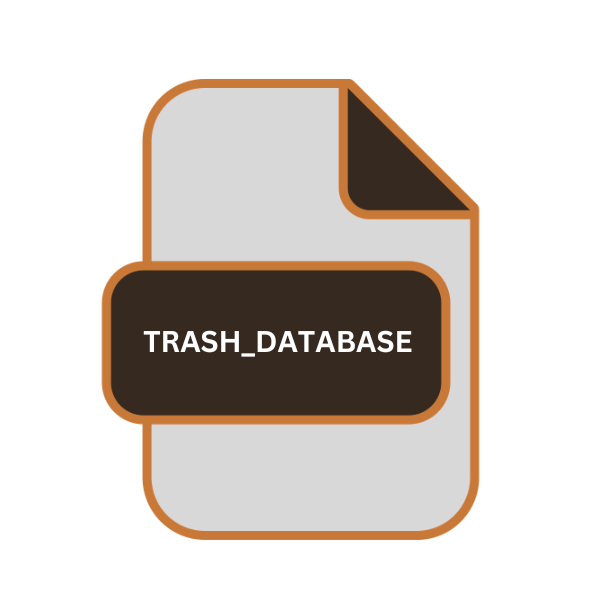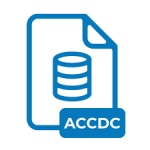.TRASH_DATABASE File Extension

Files by Google Trash Database
| Developer | |
| Popularity | |
| Category | Database Files |
| Format | .TRASH_DATABASE |
| Cross Platform | Update Soon |
What is an TRASH_DATABASE file?
In the digital landscape, file management is a critical aspect of organizing data. Among the various file types that users encounter, the .TRASH_DATABASE file extension holds significance, particularly within the realm of Android file management.
This article delves into the origins, structure, and utility of .TRASH_DATABASE files, shedding light on their technical specifications, advantages, disadvantages, and methods for conversion and accessibility across different operating systems.
More Information.
Files by Google emerged as a solution to the growing need for efficient file management on Android devices. With the proliferation of digital data and the increasing reliance on smartphones for various tasks, effective file organization became imperative.
The .TRASH_DATABASE extension was introduced as part of this endeavor, aiming to provide users with a mechanism to recover deleted files and manage storage space more effectively.
Origin Of This File.
The .TRASH_DATABASE file extension is primarily associated with Files by Google, an application designed for managing files and storage on Android devices.
These files are essentially databases that store information about deleted files, serving as a repository for items moved to the recycle bin within the Files by Google app.
When users delete files from their Android devices, these files are not immediately eradicated but are instead moved to a temporary storage location represented by the .TRASH_DATABASE file.
File Structure Technical Specification.
.TRASH_DATABASE files follow a structured format optimized for storing metadata related to deleted files. They typically comprise fields such as file name, file path, deletion timestamp, and other attributes necessary for file recovery and management.
These files may utilize SQLite or similar database formats for efficient data storage and retrieval.
How to Convert the File?
Converting .TRASH_DATABASE files:
- Understand the data format: .TRASH_DATABASE files usually use SQLite format, containing metadata about deleted files.
- Select a tool or method: Choose from user-friendly options like SQLite Database Browser or command-line tools for more advanced users.
- Open the file: Use your chosen tool to open the .TRASH_DATABASE file, typically by selecting “Open Database” and locating the file.
- Extract data: Explore the database structure and extract desired information using SQL queries or built-in export functions.
- Consider automation: For frequent conversions, writing a script in Python or similar languages can streamline the process.
- Validate the output: Review the converted data for accuracy and completeness, ensuring it aligns with the original source.
Advantages And Disadvantages.
The utilization of .TRASH_DATABASE files offers several advantages in terms of file management on Android devices.
They provide users with a safety net, allowing for the recovery of accidentally deleted files. Moreover, by retaining deleted files in a separate database, .TRASH_DATABASE files help optimize storage space, preventing immediate permanent deletion and facilitating smoother file management.
The reliance on .TRASH_DATABASE files also poses certain limitations and disadvantages. One notable drawback is the potential for these files to consume storage space, particularly in scenarios where large volumes of files are deleted frequently.
The recovery process may not always be foolproof, with certain files becoming corrupted or inaccessible within the database.
How to Open TRASH_DATABASE?
Open In Windows
To open .TRASH_DATABASE files on Windows systems, users can utilize third-party software capable of reading SQLite database files.
Applications such as SQLite Database Browser or DB Browser for SQLite provide user-friendly interfaces for browsing and accessing the contents of .TRASH_DATABASE files on Windows platforms.
Open In Linux
Linux users can leverage command-line tools or graphical SQLite database viewers to open .TRASH_DATABASE files. Command-line utilities like sqlite3 enable direct interaction with SQLite databases, allowing users to execute queries and retrieve data.
Alternatively, graphical tools such as SQLiteStudio offer a more intuitive interface for managing .TRASH_DATABASE files on Linux distributions.
Open In MAC
macOS users can employ SQLite database browsers similar to those available for Windows and Linux platforms.
Applications like Base or SQLiteFlow provide macOS users with the capability to open and explore .TRASH_DATABASE files, facilitating the retrieval of deleted file metadata and other relevant information.
Open In Android
Given that .TRASH_DATABASE files are native to the Files by Google app on Android devices, accessing them within the Android environment is relatively straightforward. Users can navigate to the recycle bin section within the Files by Google app to view deleted files and initiate the recovery process if desired.
The app handles the retrieval of deleted files from the .TRASH_DATABASE file seamlessly, restoring them to their original locations within the device’s storage.
Open In IOS
As .TRASH_DATABASE files are specific to the Android platform and the Files by Google app, direct compatibility with iOS devices is not available.
iOS users can explore alternative file management applications compatible with their devices to achieve similar functionality, albeit without native support for .TRASH_DATABASE files.
Open in Others
For platforms or systems not explicitly covered above, accessing .TRASH_DATABASE files may require creative solutions or the development of custom tools tailored to the specific environment.
The fundamental principles of database management and file recovery apply universally, enabling users to devise strategies for opening and utilizing .TRASH_DATABASE files across a diverse range of platforms.













